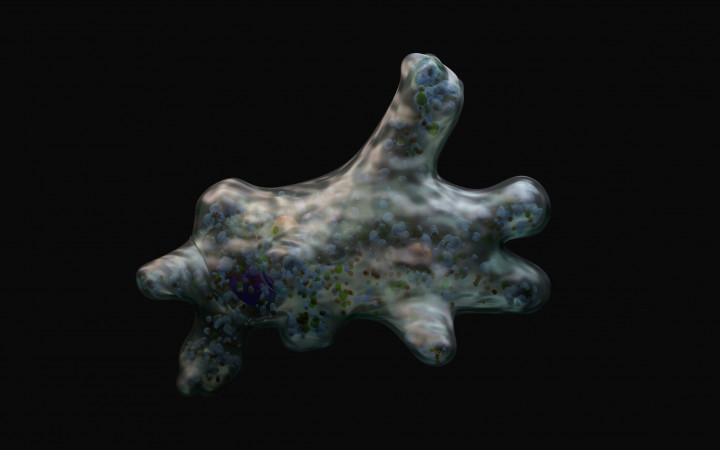Today’s Wonder of the Day was inspired by Lena. Lena Wonders, “What is an amoeba?” Thanks for WONDERing with us, Lena!
Isn’t the variety of life on Earth amazing? For example, think about all the different ways organisms move around. Humans walk along on two feet, while many other mammals use four. Birds hop on two feet or fly through the air. Spiders use eight legs, insects use six, and snakes use none. Some living things even use what experts call “false feet.”
Organisms that move using false feet (or pseudopods) are called amoebas. Experts say false feet are the most primitive form of movement. How do they work? When an amoeba wants to move, it forms a cytoplasmic extension. That extension then reaches out and pulls the amoeba forward.
People who study amoebas will tell you they’re very interesting little creatures. They are single-celled organisms, so most are very small. They’re also eukaryotes. That means they store their DNA inside a nucleus. Experts say that amoeba cells are a lot like some human cells.
However, just because they’re single-celled doesn’t mean they’re all tiny. In fact, amoebas vary in size. Most are so small, they can only be seen under a microscope. Others are much larger.
In 2011, scientists found a new amoeba species. They were exploring the Mariana Trench, the deepest place on Earth. Called xenophyophores, these single-celled organisms can be four inches (10 cm) long!
What causes amoebas to vary so much in size? Experts say a lot of it has to do with what they eat. Most amoebas feed on bacteria, algae, or fungi. What any one amoeba eats depends on where it lives.
Most amoebas live in water. They’re common in oceans, rivers, and lakes. However, some amoebas will leave the water to live in another habitat. If given the chance, they’ll live inside other organisms—including humans.
That’s when amoebas can cause a lot of trouble. For example, one type of amoeba causes dysentery. Another very rare amoeba feeds on brains. This is why access to clean drinking water is necessary. It’s also important to use caution when swimming in lakes and other natural bodies of water.
You may be surprised to learn that false feet play an important part in feeding. After all, amoebas don’t have mouths. Instead, when an amoeba finds food, it extends its false feet. The false feet wrap around the food and use enzymes to digest it. Any waste then diffuses back through the cell wall.
Would you like to study amoebas one day? Maybe you’ll even travel to Mariana Trench to see some of the largest amoebas alive! They’re just one reminder of all the interesting forms of life our planet holds. What else could be out there?
Standards: NGSS.LS1.A, NGSS.LS1.C, NGSS.LS1.D, NGSS.LS2.A, NGSS.LS4.C, CCRA.L.3, CCRA.L.6, CCRA.R.1, CCRA.R.2, CCRA.R.4, CCRA.R.10, CCRA.SL.1, CCRA.SL.2, CCRA.W.3, CCRA.L.1, CCRA.L.2




